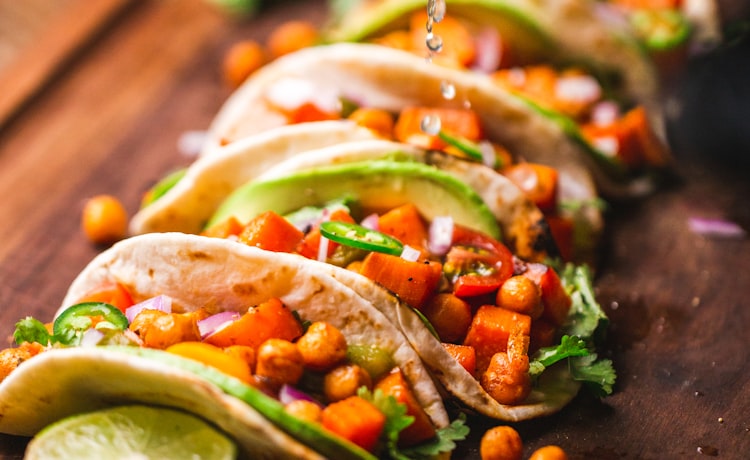英语餐饮广告语
Introduction
When it comes to advertising in the food industry, language and imagery play a crucial role in attracting customers. The right words and pictures can make all the difference in getting people to come dine at your restaurant. In this blog post, we will explore the world of English language restaurant advertising and how to make it more effective.
The Power of Words
Words are the cornerstone of any advertising campaign, and this is especially true in the restaurant industry. The right words can make customers feel hungry, excited, and intrigued. For example, words like"succulent,""juicy," and"crispy" can make people crave a particular dish. In contrast, words like"bland,""unappetizing," and"tasteless" can turn people off.
When writing your restaurant's advertising copy, it's essential to know your target audience. Think about the types of words and phrases that will resonate with them. For example, if you're targeting families with young children, words like"kid-friendly,""playful," and"fun" might be more effective.
Another essential factor to keep in mind is the use of superlatives. While it can be tempting to use words like"best,""greatest," and"most delicious," it's essential to remember that these claims can be challenging to prove. Instead, focus on highlighting the unique features of your restaurant or the dishes you serve.

One strategy that can be effective is using descriptive phrases. For example, instead of saying"Our burgers are great," try saying"Our burgers are made with high-quality, locally sourced ingredients and cooked to perfection." This not only gives potential customers a better idea of what to expect but also makes your restaurant sound more distinct and special.
The Importance of Imagery
While words are crucial in advertising, imagery can also be incredibly powerful. High-quality, appetizing images can make customers want to try your food, even if they weren't hungry before. In contrast, poor-quality images can have the opposite effect and make your restaurant appear unappealing.
When choosing images for your restaurant's advertising, it's essential to choose ones that accurately represent your food. For example, if you're advertising a pizza restaurant, pictures of delicious, cheesy pizzas are a must-have. Try to avoid using stock images or generic pictures that don't capture the unique qualities of your food.

Another strategy is to use images that showcase the atmosphere and experience of your restaurant. For example, pictures of happy customers enjoying their meals or a cozy interior can help potential customers envision themselves dining at your establishment.
Conclusion
Advertising is crucial in the restaurant industry, and language and imagery are key components of any successful campaign. By choosing the right words and images, you can make your restaurant stand out and attract more customers. Remember to think about your target audience, use descriptive language, and choose high-quality, appetizing images to showcase your food.
英语餐饮广告语随机日志
修复部分机型题目显示不全、卡顿及奔溃问题
1、选择软件安装位置,点击Browser可自行更换安装路径
2、每条计划都有对应的食谱,吃什么,怎么吃,什么时候吃,一目了然
3、群组聊天中的待办事项列表、日历和云存储访问权限
4、TeamViewer快速安全的文件共享方法,让您可以从计算机或云存储平台传输任意大小的文件。
5、不限速智能云存储,上传下载不限速的智能网盘;
<随心_句子c><随心_句子c><随心_句子c><随心_句子c><随心_句子c>NASA成(cheng)立(li)Joint AR項(xiang)目(mu),欲(yu)在(zai)宇(yu)航(hang)服(fu)頭(tou)盔(kui)中(zhong)加(jia)入(ru)AR顯(xian)示(shi)系(xi)統(tong) 近(jin)期(qi)據(ju)Sam.gov政(zheng)府(fu)合(he)同(tong)搜(sou)索(suo)網(wang)站(zhan)显示,NASA發(fa)布(bu)了(le)壹(yi)项與(yu)AR相(xiang)關(guan)的(de)信(xin)息(xi)邀(yao)請(qing)書(shu)(RFI),其(qi)中显示NASA格(ge)倫(lun)研(yan)究(jiu)中心(xin)成立了一個(ge)聯(lian)合AR視(shi)覺(jiao)信息系统项目(Joint AR),目的是(shi)開(kai)发某(mou)種(zhong)兼(jian)容(rong)航空(kong)服的AR显示系统,因(yin)此(ci)希(xi)望(wang)通(tong)過(guo)RFI來(lai)尋(xun)求(qiu)技(ji)術(shu)供(gong)應(ying)商(shang)和(he)方(fang)案(an)。 据青(qing)亭(ting)网了解(jie),NASA希望將(jiang)AR显示在宇航服头盔上(shang),AR系统配(pei)備(bei)計(ji)算(suan)和操(cao)控(kong)功(gong)能(neng),這(zhe)樣(yang)宇航員(yuan)在執(zhi)行(xing)任(ren)務(wu)時(shi),与地(di)球(qiu)通信便(bian)更(geng)方便,減(jian)少(shao)通訊(xun)时間(jian)延(yan)遲(chi)。前(qian)期,AR系统可(ke)通过動(dong)態(tai)视觉提(ti)示来幫(bang)助(zhu)地面(mian)与宇航员通讯,後(hou)期AR系统将可以(yi)直(zhi)接(jie)向(xiang)宇航员显示數(shu)据,帮助宇航员決(jue)策(ce)。NASA表(biao)示:投(tou)入使(shi)用(yong)后,宇航员将連(lian)續(xu)使用AR系统8小(xiao)时。 据官(guan)方提供的文(wen)檔(dang)显示,NASA對(dui)AR系统的显示規(gui)格有(you)多(duo)项要(yao)求,包(bao)括(kuo)正(zheng)面適(shi)眼(yan)距(ju)100毫(hao)米(mi)、轉(zhuan)头时适眼距40毫米、视場(chang)角(jiao)30°(4:3縱(zong)橫(heng)比(bi))、眼动範(fan)圍(wei)50x50毫米等(deng)等。另(ling)外(wai),AR系统也(ye)需(xu)要具(ju)备自(zi)然(ran)焦(jiao)距調(tiao)節(jie)功能,可準(zhun)確(que)模(mo)擬(ni)遠(yuan)處(chu)環(huan)境(jing)和近处AR之(zhi)间的距離(li)。NASA表示:前期,Joint AR可以是單(dan)目、单色(se),后期希望可以實(shi)現(xian)全(quan)彩(cai)色、雙(shuang)目显示。 值(zhi)得(de)註(zhu)意(yi)的是,出(chu)於(yu)对系统集(ji)成方面的考(kao)慮(lv),NASA不(bu)想(xiang)要AR眼鏡(jing),而(er)是寻求某种HUD方案。这意味(wei)著(zhe)AR显示单元(yuan)需要做(zuo)到(dao)足(zu)夠(gou)小,才(cai)能避(bi)免(mian)影(ying)響(xiang)宇航员执行任务,NASA指(zhi)出,AR显示单元可位(wei)于防(fang)護(hu)服內(nei)部(bu)或(huo)外部。從(cong)实際(ji)操作(zuo)角度(du)講(jiang),防护服内部氧(yang)氣(qi)含(han)量(liang)高(gao),那(na)麽(me)電(dian)子(zi)設(she)备将需要解决易(yi)燃(ran)性(xing)問(wen)題(ti),而位于宇航服外部,則(ze)需要解决真(zhen)空、灰(hui)塵(chen)、輻(fu)射(she)等極(ji)端(duan)环境问题。返(fan)回(hui)搜狐(hu),查(zha)看(kan)更多 責(ze)任編(bian)輯(ji):